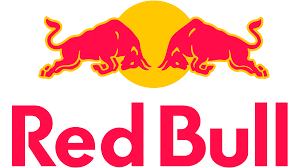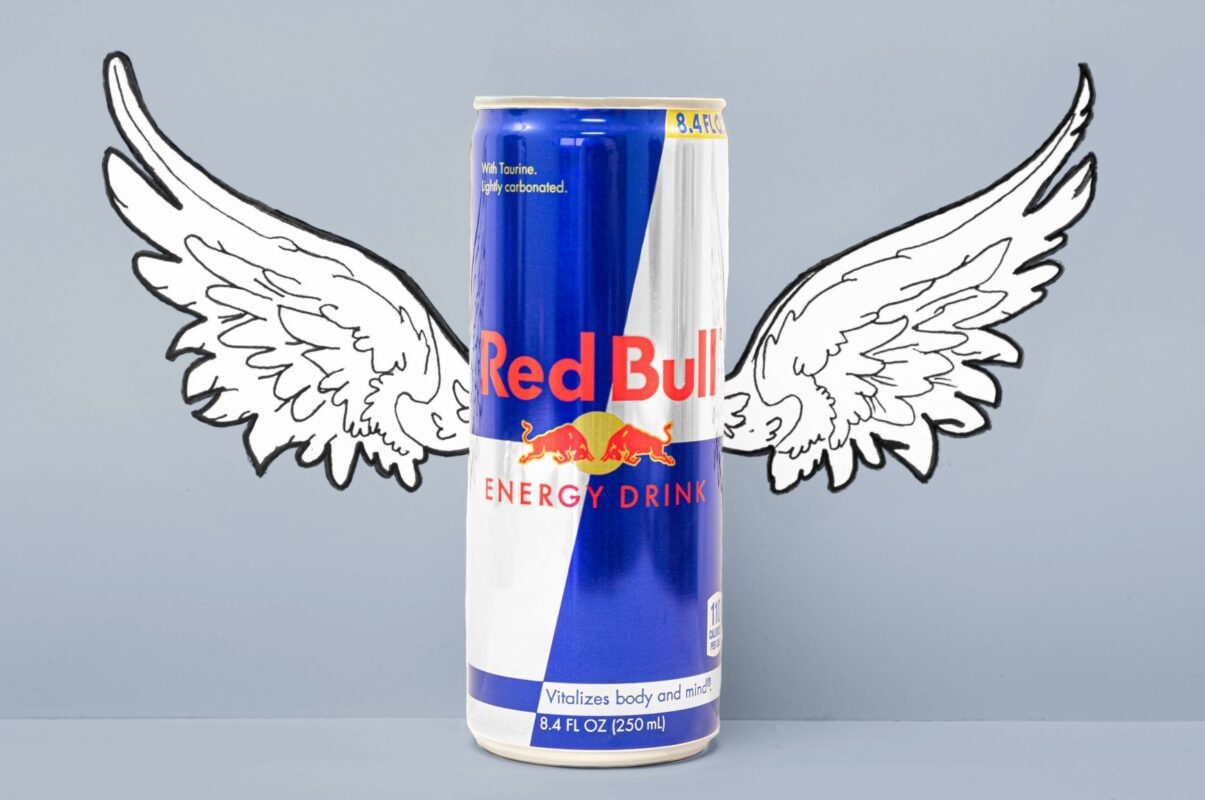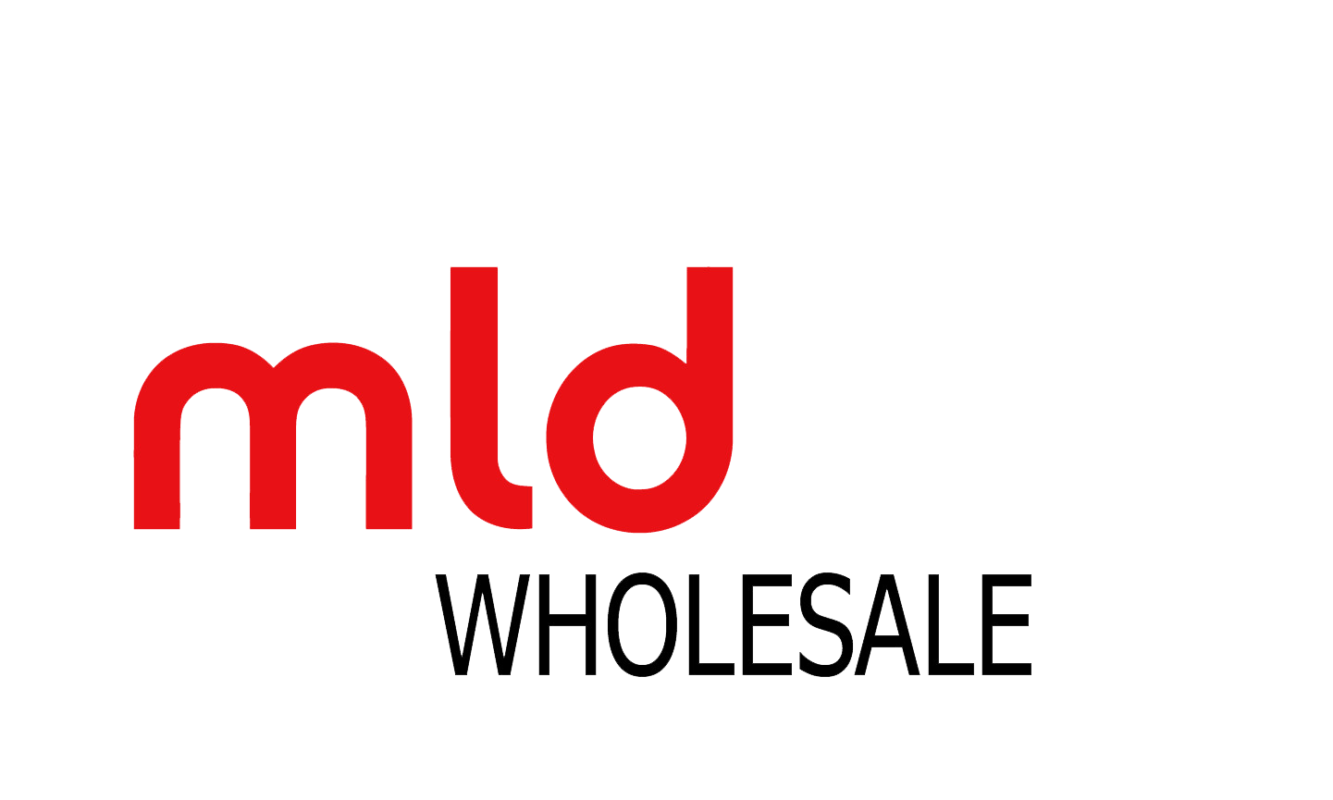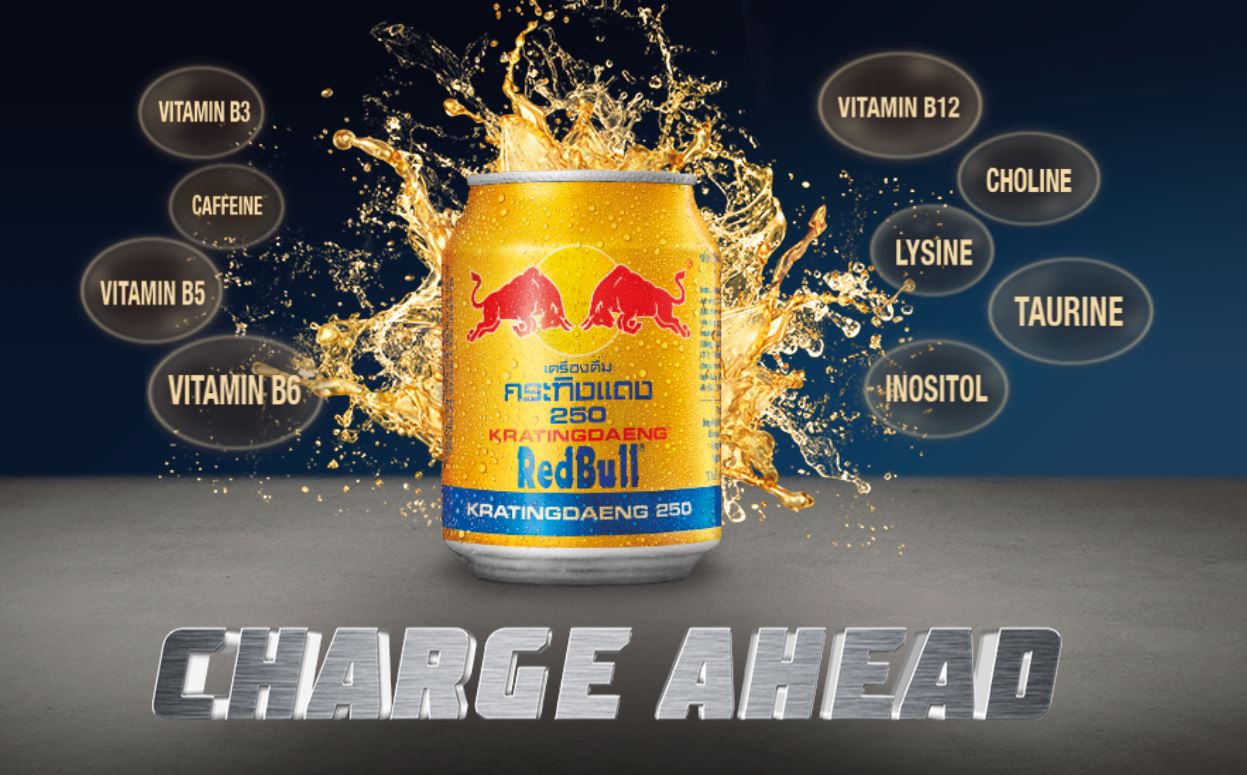We all may know thay Redbull is a very famous energy drink brand across the globe. But, don’t you know where it came from?

It started from an idea of a Thai energy drink brand named “Krating Daeng”, which means red bull. The, an Austrian entrepreneur was inspired by this kind of beverage and cooperated with the owner of Krating Deang to modify the taste of the drink to be more friendly with Westeners, and they succeed. The brand Red Bull was first introduced in 1987, and is known as a Autrian brand with an impressive amber color.
Now Red Bull has highest market share among energy drinks and appeares in almost any sport events as well as sport teams. “Red Bull gives you wings” – the slogan has its own meaning.
What makes Redbull?
Redbull is a combination of sugar, water, B-group vitamins, caffeine and taurine, … as detailed:
Glucose
Like most popular soft drinks, Red Bull is largely sugar water. One 8.4 fl oz Red Bull Energy Drink contains 27g of sugars (sucrose and glucose). This total amount of sugars is in the range of the sugar level found in an equivalent amount of apple or orange juice.
Taurine
Also known as 2-aminoethanesulfonic acid, taurine was originally isolated from bull bile in 1827. Now made synthetically, it is the magical elixir said to bring out the kitesurfing extremophile in any Web-surfing nerd. Taurine’s actual effects, while not as drastic as the hype, are pretty wide-ranging, even from the amount found in a single can: Not only is it an inhibitory neurotransmitter (in some cases acting as a mild sedative) and an age-defying antioxidant, it even has the potential to steady irregular heartbeats.
Glucuronolactone
Internet rumors claimed this was a Vietnam-era experimental drug that causes brain tumors. Luckily, that’s not true. But don’t crumple up your tinfoil hat yet — hardly anyone has looked into exactly what this stuff does. So little research has been done on glucuronolactone (and most of it 50 years ago) that almost all information about it is mere rumor. Users generally believe it fights fatigue and increases well-being, but that could turn out to be bull, too.
Caffeine
Caffeine is Red Bull’s wings. All the things this drink is supposed to do for you — increase concentration and reaction speed, improve emotional state, and boost metabolism — are known effects of this white powder, a distant cousin of cocaine. One 8.4 fl oz can of Red Bull Energy Drink contains 80 mg of caffeine.
Niacin
Also known as vitamin B-3, niacin increases so-called good cholesterol (HDL) by preventing the formation of triglycerides, making it a terrific cholesterol drug. Unfortunately, there isn’t enough niacin here to have this benefit. And it’s not even pure enough to give you the mild head rush dubbed the “niacin flush.”
Sodium citrate
Commonly used as a preservative in soft drinks and spreadable cheeses, sodium citrate also helps convert glucose into lactic acid during exercise, producing a measurable effect on athletic performance. In at least one test, it shaved an average of 17 seconds off a 5K run.
Inositol
A carbohydrate found in animal muscle (sometimes called “meat sugar”), inositol is turning out to be a wonder drug that significantly reduces depression, panic attacks, agoraphobia, and obsessive- compulsive disorder. It might even be what makes whole grains effective cancer fighters. Instead of being a bit player in Red Bull (you’d need to drink as many as 360 cans a day to get its benefits), inositol probably deserves a drink of its own.
Redbull different products & tastes
Other than the main product Red Bull Engergy Drink, In the world, Redbull is available in many different edition and tastes:

The Red Bull Red Edition
Be surprised by the pleasantly tart taste of cranberry.
The Red Bull Pear Edition Sugarfree
The perfect taste balance of ripe pears exclusively available without sugars.
The Red Bull Peach Edition
A fresh white peach and nectarine taste.
The Red Bull Coconut Edition
The Red Bull coconut edition with the taste of exotic coconut and fruity blueberry.
The Red Bull Blue Edition
A classic, with the fruity taste of blueberry.
The Red Bull Green Edition
If you like the taste of apple and kiwi then the Red Bull green edition is perfect for you.
The Red Bull Orange Edition
If you like the fruity-fresh taste of tangerine, the Red Bull orange edition is perfect for you.
The Red Bull Yellow Edition
Experience the exotic taste of tropical fruits.
Redbull sugarfree: contain ingredients like Redbull energy drink such as Caffeine, B group vitamins, taurien but added aspartame & acesulfamek, alpine water. It is serverd without sugar but provide energy for a balancing and busy day between work and gym or during fun nights out with your friends.
Redbull zero calories: with zero calories, zero sugar and gives consumers the choice between the original Red Bull Energy Drink and a zero calories, zero sugar product.
Red Bull products are appreciated worldwide by top athletes, students, and in highly demanding professions as well as during long drives.

Red Bull in Vietnam
In Vietnam, Red Bull has a factory (Redbull Vietnam) built in 1999 and manufactures a large amount of products for domestic market and exporting, especially classic Rebull drinks with amber color. In Vietnam, Rebull sponsors best sport teams like what they do in the world. The newest is the Hoang Anh Gia Lai Football Club, a club that has a big quantity of fans.



